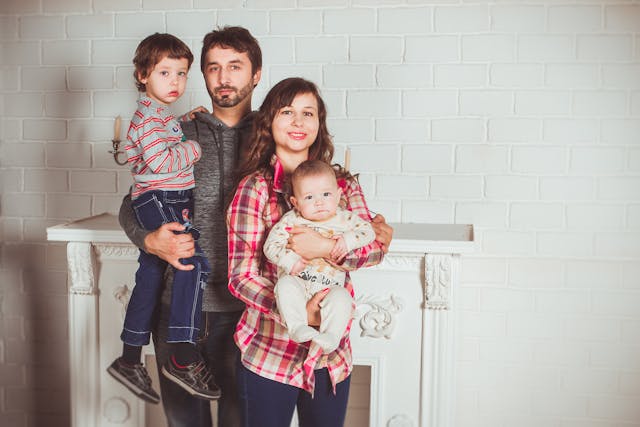Just because a family is dysfunctional doesn’t mean its members don’t have clearly defined roles.

Everyone in the family plays their part in the dynamic, whether unintentionally or not, and this not only keeps each of them trapped, but also perpetuates the bad behavioural patterns that play out over and over again. No matter the family, here are some of the roles you’ll find filled every single time.
1. They carry the weight of family success.

Often the eldest or most capable child, this member shoulders the burden of making the family look good from the outside. They excel at academics, careers, and life milestones, but privately struggle with perfectionism and burnout. Breaking free starts with embracing the right to be average sometimes – try deliberately choosing not to overachieve in low-stakes situations, and notice how the world keeps turning.
2. They keep the family talking to each other.

This person works overtime ensuring family members stay connected, even when relationships are strained. While their diplomacy skills are impressive, they often lose themselves in the role of family switchboard. Growth begins by setting communication boundaries, like taking breaks from group chats or choosing not to relay messages between feuding relatives.
3. They challenge the family norms.

Acting as the family’s emotional thermometer, this member expresses the tensions everyone else tries to ignore. Often labelled difficult or problematic, they’re actually responding to underlying family dysfunction. Healing involves recognising their perceptiveness as a strength and finding constructive ways to advocate for change, perhaps by suggesting family therapy or open discussions.
4. They become invisible to avoid conflict.

This quiet family member has mastered the art of blending into the background, keeping their needs and opinions hidden to maintain peace. While this adaptability helped them survive tense family dynamics, it can lead to feeling overlooked in adult relationships. Recovery starts with taking up space – try sharing one personal story at gatherings or expressing a preference when asked, even if it’s just about what to eat for dinner.
5. They make everyone laugh to ease tension.

Using humour as their shield, this person deflects from serious issues by keeping everyone entertained. While their wit brings welcome relief to heavy situations, it can prevent them from dealing with real emotions. Growth involves learning to sit with uncomfortable feelings instead of immediately cracking a joke. Start by waiting a beat before lightening the mood – sometimes tension needs to be felt to be resolved.
6. They take care of everyone’s emotional needs.

This family member becomes the unofficial therapist, absorbing other people’s problems while neglecting their own emotional health. Often wise beyond their years, they get burned out from constant emotional labour. Healing begins by redirecting some of that nurturing energy inward – schedule regular self-care activities and practice referring family members to professional support when needed.
7. They remain stuck as the eternal child.

Perpetually dependent on other people, this member struggles with adult responsibilities as the family unconsciously keeps them in a childlike role. Breaking free means building confidence through small wins – try managing a household task from start to finish without asking for help, gradually increasing the complexity of challenges you tackle independently.
8. They take responsibility for their parents’ happiness.

This role reversal has them parenting their own parents, managing adult emotions and responsibilities long before they’re ready. They often struggle with guilt when pursuing their own life goals. Recovery involves accepting that parents are responsible for their own wellbeing – start by declining to solve parental problems, instead offering empathy while maintaining personal boundaries.
9. They become the family’s voice of doom.

Always anticipating the worst, this member developed hypervigilance from navigating unpredictable family situations. While their cautious nature can be protective, it often prevents them from embracing life’s possibilities. Healing starts with small risk-taking in safe situations – try saying “yes” to spontaneous, low-stakes opportunities and notice when positive outcomes occur.
10. They play the role of family mascot.

Cute and charming, this member learned to use their appeal to distract from family issues. While their personality might win friends easily, they struggle with being taken seriously in adult life. Growth involves developing depth beyond the cheerful facade – practice sharing authentic feelings with trusted friends and allowing yourself to be seen as multidimensional.
11. They maintain distance for self-preservation.

This family member creates physical or emotional space to protect themselves from dysfunction. While this strategy helps maintain sanity, it can lead to difficulty with intimate relationships later. Recovery involves learning to stay connected while maintaining healthy boundaries – try participating in family events with a pre-planned exit strategy, gradually building tolerance for closeness on your own terms.




